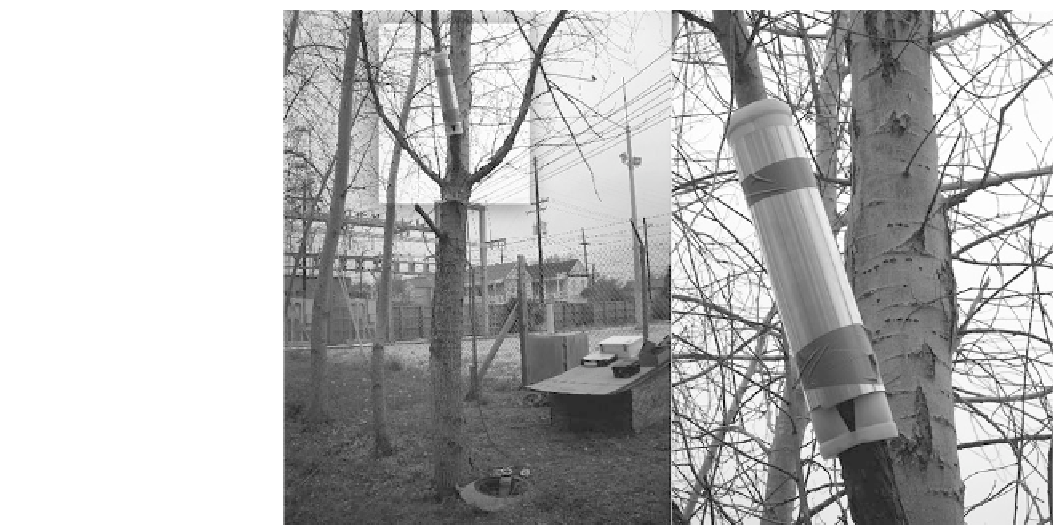Environmental Engineering Reference
In-Depth Information
Fig. 9.1
A sap-flow heater
installed on the branch of a
dormant poplar tree at a
phytoremediation site near
Charleston, SC. The sap flow is
measured along with changes in
groundwater level, in a shallow
monitoring well located at the
base of the tree (Photograph by
author).
Fig. 9.2
A thermocouple dissipation probe (TDP) installed in the
trunk of a poplar tree at a phytoremediation site near Elizabeth City,
NC (Photograph by author).
Fig. 9.3
The cooling of the heated thermocouple of a TDP sap-flow
meter installed in the poplar tree shown in Fig.
9.2
. The direction of sap
flow is toward the top of the figure (Photograph by author).
transpirational water losses exceeding water supplies and the
depletion of water storage (Kramer 1983) and tensional
forces, with the diameter returning to normal at night when
water loss is reduced (Hinckley and Bruckerhoff 1975).
Steinberg et al. (1990b) noted that sap flow on the northern
side of a tree was 41% less than flow on the southern
exposure. Cermak et al. (1984) reported sap flow for shaded
branches was less (by up to 79%) of sap flow measured on
non-shaded branches. Multiple TDP probes can be placed
around the circumference of a tree in order to determine the
effect, if any, of solar radiation on sap-flow rates.
The measurement of sap flow usually is determined for an
individual tree within a stand of multiple trees. These results
can be applied, however, to estimate the sap flow for the
entire stand of trees. Although perhaps not useful in
situations of natural forests that cover thousands of acres,
this approach is useful for phytoremediation purposes where
most sites will contain less than a few thousand trees spread
over only a few acres. The extension of sap flow and transpi-
ration to full-scale transpiration is still as much an art as it is
a science, however (Hinckley et al. 1994).
One method to apply individual tree-based sap-flow
information to a larger stand is to multiply the individual
tree's sap flow by an estimate of the total cross-sectional area
of all the trees in the planted area. To do this accurately,
plant diameter
should be measured using a caliper.



Search WWH ::

Custom Search